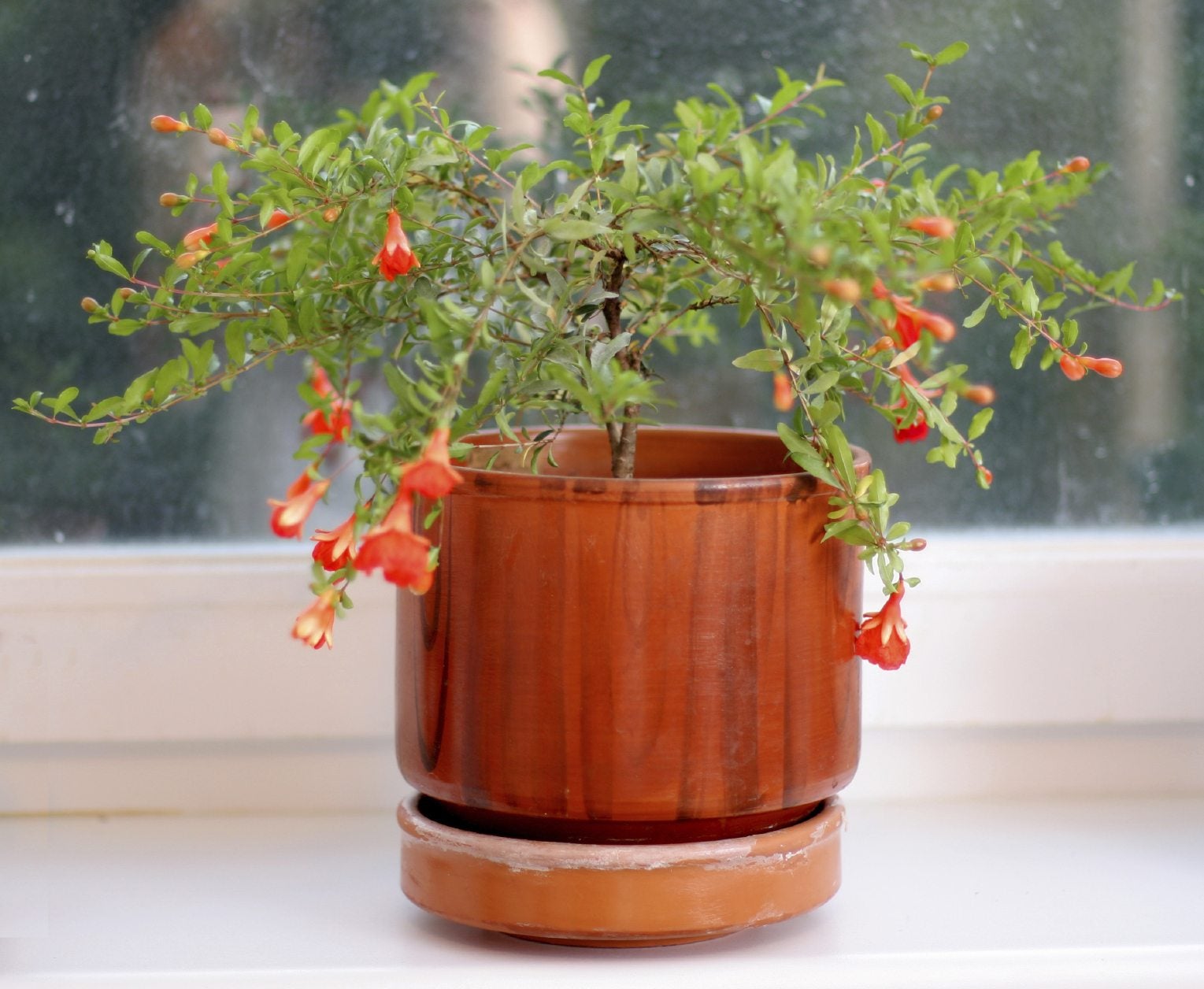Pomegranate Houseplants – How To Grow Pomegranates Inside


If you think that pomegranate trees are exotic specimens that require a specialized environment and an expert’s touch, you may be surprised that growing pomegranate trees indoors is actually relatively easy. In fact, indoor pomegranate trees actually make great houseplants. Some gardeners enjoy growing pomegranate bonsai, which are simply miniature forms of natural trees. Read on to learn more about how to grow pomegranates inside and specifics about indoor pomegranate care.
How to Grow Pomegranates Inside
Pomegranate trees reach mature heights of up to 30 feet (9 m.), which makes them too tall for most home environments. You can get around the size problem when growing pomegranate houseplants by planting a dwarf pomegranate tree, which reaches heights and widths of 2 to 4 feet (61 cm. to 1 m.). Many people grow dwarf pomegranates strictly as ornamental trees because the small, sour fruits are loaded with seeds. Plant your pomegranate tree in a sturdy pot with a diameter of about 12 to 14 inches (31-36 cm.). Fill the pot with a lightweight commercial potting mix. Place the tree in a sunny spot; pomegranate needs as much sunlight as possible. Normal room temperatures are fine.
Indoor Pomegranate Care
Water your pomegranate tree frequently enough to keep the soil moist but not soggy. Water deeply until water drips through the drainage hole, then let the soil dry slightly before watering again. Never allow the soil to become bone dry. Feed your pomegranate tree every other week during spring and summer, using an all-purpose liquid fertilizer diluted to half strength. Repot the pomegranate to a pot just one size larger when the plant becomes slightly rootbound, but not before. Prune your pomegranate tree in early spring. Remove any dead growth and trim just enough to remove wayward growth and maintain the desired shape. Pinch the tips of new growth occasionally to encourage a full, compact plant.
Indoor Pomegranate Trees in Winter
Pomegranate houseplants need at least four to six hours of bright light every day. If you can’t provide this naturally, you may need to supplement available light with grow lights or fluorescent bulbs. If the winter air in your home is dry, place the pot on a tray of wet pebbles, but be sure the bottom of the pot isn’t actually standing in the water. Keep the soil slightly on the dry side and be careful not to overwater the plant during the winter months.
Sign up for the Gardening Know How newsletter today and receive a free copy of our e-book "How to Grow Delicious Tomatoes".

A Credentialed Garden Writer, Mary H. Dyer was with Gardening Know How in the very beginning, publishing articles as early as 2007.